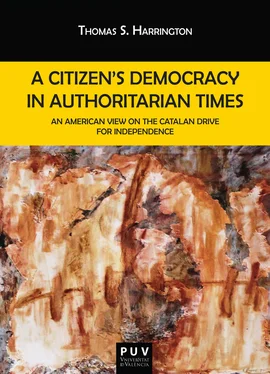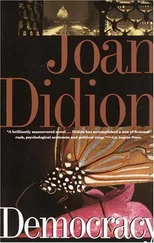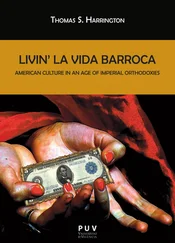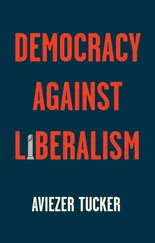Nowhere is this tendency more evident than in the work of the Revista de Filología Española, the marquee publication of the Centro de Estudios Históricos. The research agenda of this publication shows am uncommon interest in demonstrating the essential ‘timelessness” of the Castilian “character” as evinced in its language and literature, and from there, the center’s anointed role as the prime organizer Iberian life. The key figure at the Revista was Menéndez Pidal, the great chronicler of the Spanish epic and erstwhile disciple of Menéndez Pelayo. Though he would suggest, in contravention to the hierarchical ideals of his mentor, that El Cid, and the Castilian Romancero demonstrated the existence of strongly democratic tendencies within “el pueblo español,” he in no way sought to challenge or to deconstruct “the people’s” proclivity toward religiously-inspired warfare. Indeed, that was seen by him as one of the defining features of lo nacional. In other words, Menéndez Pidal’s vision of the past put a very slight liberal patina on a very old story. Those reading his scholarly articles and/or the famous Clásicos Castellanos series produced for the broader public by his co-researchers and disciples, would receive very few messages disabusing them of the belief that, should the need arise, the center and its “people” were entitled to use institutional coercion against those whom they viewed as denying their set of historically ratified prerogatives.
Despite this of the Castilianist counter-offensive, the Catalanist culture-planning drive continued unabated during the second decade of the 20th century. It was during this period that Eugeni d’Ors solidified the esthetic and moral canons of Noucentisme and Prat de la Riba leveraged the scarce resources of the Mancomunitat, inaugurated after a protracted political battle in 1914, to further multiply the number of institutions dedicated to widening the repertoire of Catalan cultural options. The evident success of the Lliga’s in this realm, as well as Prat’s famous call for the creation of l’Espanya Gran in 1916, [12]emboldened those with similarly structured discourses in the Basque provinces and Galicia. In the first case, this was translated into a re-doubled emphasis, especially within the branch of the movement linked to one of the late Arana’s more trusted collaborators, Engracio Arantzadi, to the creation of autochthonous cultural artifacts. Aranzadi’s efforts culminated with the publication in 1918 of his “breviary” of national identity, La nación vasca. In Galicia, the Catalan example, along with the notions of a re-born Portuguese identity (a cultural commerce largely catalyzed by the writings of the Catalan Iberianist Ignasi Ribera i Rovira) [13]gave birth to that region’s first overtly nationalist (as opposed to regionalist) movement.
Like the dominant discourses of national identity in all of the other areas of the peninsula, the Galician discourse of identity was profoundly marked by both the logic of Herderian nationalism and a frank admittance of religion’s key role in the maintenance of social cohesion. Its foremost theorist and cultural impresario was Vicente Risco who, quite consciously following the examples of Prat de la Riba and Aranzadi, as well as their Portuguese correlate Teixeira de Pascoaes, [14]sought to capture the “essence” of his people in a single “popular” essay: Teoria do nacionalismo galego (May 1920). If there was a salient difference between this text and the models that had preceded it, it was on the level of mimesis. Like Brañas and Murguía before him, Risco was much more heavily indebted than his non-Galician counterparts to the vocabulary and tropes of nationalist activists in other places.
A very short time after the publication of Teoria do nacionalismo galego, Ortega begins publishing in El sol the series of articles that would later come to be known as España invertebrada. As a man who took pride in his ability to be a la “altura de los tiempos,” we can assume that as he sat down to write the series that he was deeply aware of the growing consolidation of the cultural repertoires of national identity on the so-called periphery of the peninsula. Adding to his concern was the ongoing Irish struggle for independence, Wilson’s calls for the right to national self-determination (issued in January 1918), and closer to home, the apparent radicalization of Catalanism following the defeat of Cambó’s bid for a statute of autonomy the year before. As has been noted, Ortega had for a number of years been a harsh critic of historicist nationalisms who was deeply implicated in generating a supposedly new “liberal” justification of the Spanish state. After three years in which he had somewhat drifted away from the public forum to attend to the more intimate concerns showcased in El espectador, Ortega clearly sought to make a resounding statement on Spain’s “nationalities problem.”
True to his widely professed liberal sympathies, he begins by making a convincing case (using the example of the Roman Empire) for the superiority of voluntaristic (as opposed to ethnic, territorial, or linguistic) conceptions of national identity. However, when he expands his analysis to the particular realm of Spanish history, his liberal sang-froid begins unexpectedly to boil, forcing him to emit openly historicist justifications of past Castilian comportment. Just as the “black box” of reflexive Castilianism had led Menéndez Pidal to sustain —in apparent contradiction of the truth [15]— that the Castilians were unique among the peninsular peoples in having had the grandeur of vision necessary for generating epic poems, Ortega sustains that “sólo cabezas castellanas tienen órganos adecuados para percibir el gran problema de la España integral (61) Moreover, this special leadership talent is, he tells his reader, not a function of human factors but rather a “quid divinum” (55). So much for much for the Renanian ideal of a public space and governed by earthly prerogative free from a priori notions of ethnic privilege!
Though Ortega and the vast majority of those involved in the Castilanist culture planning thrust begun in 1907 were deeply opposed to the Primo de Rivera dictatorship, it can be argued that their brand of “sanitized traditionalism” and/or “black box liberalism” provided the regime with a certain degree of intellectual justification. When we exclude the admittedly large and important issue of civil liberties, the two projects saw pretty much eye to eye on the need to pursue technological and economic progress, “clean up” corrupt government and re-establish the unquestioned protagonism of Castile in peninsular affairs. In a sense, Primo accomplished with his loyal divisions and his calculated courting of the monied élite what that army of historians and philologists had wished to do with their pens: consign the so-called “peripheral” movements of national identity to a place of clear marginalization and institutional bankruptcy.
This forceful rollback of the culture-planning initiatives of the socially conservative nationalist parties in Catalonia, Galicia and the Basque Country only speeded up the radical turn that had begun among them in the wake Cambó’s failure in Madrid. Emblematic in this regard is the trajectory of Francesc Macià. A career officer in the engineering corps of the Spanish army who had first been elected to Parliament in 1907 as a part of Solidaritat Catalana, Macià, like the majority of his fellow solidaris possessed an outlook that was essentially ameliorative in nature; he believed that in time Madrid no choice but to cede to the reality of a culturally distinct Catalonia and a bi-polar conception of the state. After several years in Madrid, however, he became increasingly convinced that this outlook was naïve as it did not take into account the visceral anti-Catalanism of the majority of the Castile-based political and cultural élite. Eventually, he becomes openly separatist in orientation, founding Estat Català in 1922, an event which would lead, in turn, to his wildly unsuccessful attempt to foment and armed insurrection at Prats de Molló in the Pyrenees in 1926. A similar shift took place in 1922 in the Basque country when the so-called grupo aberriano of Gallastegui established hegemony over Aranzadi’s more accidentalist faction of the movement. With the onset of the Primo dictatorship, important operations of these new more strident groups were carried out in exile. [16]Only in Galicia did culture-planning activities of the type that had defined the decade of the teens continue apace. This can probably be explained by the fact that the link between such activities and real political change had always been much more tenuous there than in Catalonia or the Basque Country. Thus the regime allowed initiatives like the Seminario de Estudos Galegos proceed with minimal interference. But even still, the movement suffered schisms. For example, the more militant Irmandade Nazionalista Galega (ING) split off from the Irmandades de Fala in 1922.
Читать дальше












